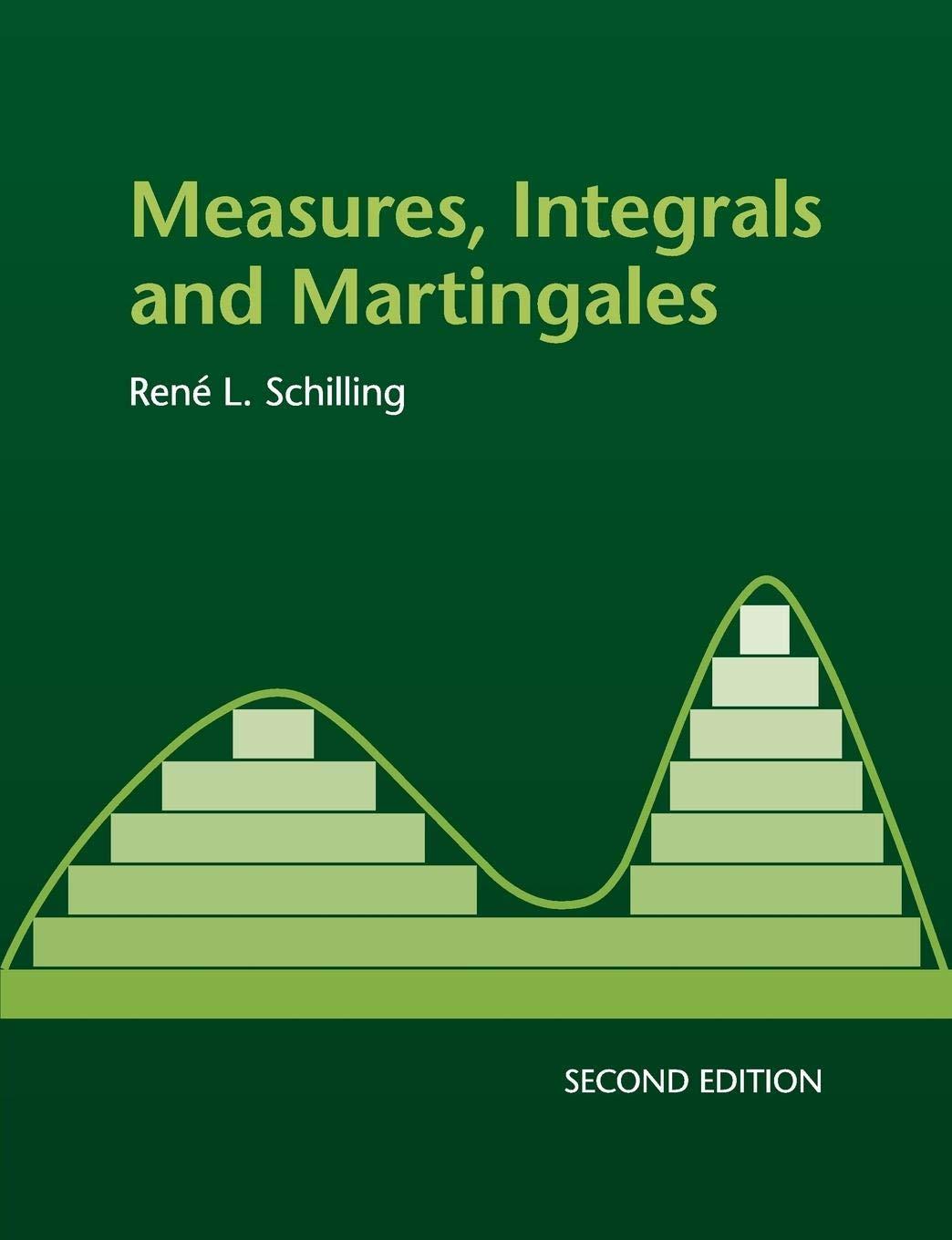An alternative definition of Dynkin systems. A family (mathscr{F} subset mathscr{P}(X)) is a Dynkin system if, and
Question:
An alternative definition of Dynkin systems. A family \(\mathscr{F} \subset \mathscr{P}(X)\) is a Dynkin system if, and only if,

Conclude that any Dynkin system is a monotone class in the sense of Problem 3.14 .
Data from problem 3.14
Monotone classes (1). A family \(\mathscr{M} \subset \mathscr{P}(X)\) which contains \(X\) and is stable under countable unions of increasing sets and countable intersections of decreasing sets
\[
\begin{array}{ll}
\left(A_{n}ight)_{n \in \mathbb{N}} \subset \mathscr{M}, & A_{1} \subset \cdots \subset A_{n} \subset A_{n+1} \uparrow A=\bigcup_{n \in \mathbb{N}} A_{n} \Longrightarrow A \in \mathscr{M} \\
\left(B_{n}ight)_{n \in \mathbb{N}} \subset \mathscr{M}, & B_{1} \supset \cdots \supset B_{n} \supset B_{n+1} \downarrow B=\bigcap_{n \in \mathbb{N}} B_{n} \Longrightarrow B \in \mathscr{M}
\end{array}
\]
is called a monotone class. Assume that \(\mathscr{M}\) is a monotone class and \(\mathscr{F} \subset \mathscr{P}(X)\) any family of sets.
(i) Mimic the proof of Theorem 3.4 to show that there is a minimal monotone class \(\mathfrak{m}(\mathscr{F})\) such that \(\mathscr{F} \subset \mathfrak{m}(\mathscr{F})\).
(ii) If \(\mathscr{F}\) is stable w.r.t. complements, i.e. \(F \in \mathscr{F} \Longrightarrow F^{c} \in \mathscr{F}\), then so is \(\mathfrak{m}(\mathscr{F})\).
(iii) If \(\mathscr{F}\) is \(\cap\)-stable, i.e. \(F, G \in \mathscr{F} \Longrightarrow F \cap G \in \mathscr{F}\), then so is \(\mathfrak{m}(\mathscr{F})\).
[ show that the families
\[
\begin{aligned}
\Sigma & :=\{M \in \mathfrak{m}(\mathscr{F}): M \cap F \in \mathfrak{m}(\mathscr{F}) \forall F \in \mathscr{F}\} \\
\Sigma^{\prime} & :=\{M \in \mathfrak{m}(\mathscr{F}): M \cap N \in \mathfrak{m}(\mathscr{F}) \forall N \in \mathfrak{m}(\mathscr{F})\}
\end{aligned}
\]
are again monotone classes satisfying \(\mathscr{F} \subset \Sigma, \Sigma^{\prime}\).]
(iv) Use (i)-(iii) to prove the following.
Monotone class theorem. Let \(\mathscr{F} \subset \mathscr{P}(X)\) be a family of sets which is stable under the formation of complements and intersections. If \(\mathscr{M} \supset \mathscr{F}\) is a monotone class, then \(\mathscr{M} \supset \sigma(\mathscr{F})\).
Step by Step Answer:






